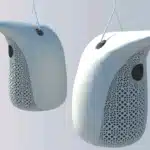In today’s fast-changing tech world, product designers play a key role. They are the top design industry job, creating solutions that meet user needs and business goals. These experts guide products from start to finish, working with teams that include product managers, engineers, and marketers.
Product designers focus on defining problems and finding new solutions. They do deep research on markets and users, design user-friendly interfaces, test their work, and build design systems. To do well, they need a wide range of skills, a clear understanding of the company’s goals, and the ability to work well with others.
Key Takeaways
- Product designers are responsible for leading products from idea to implementation, working in cross-functional teams.
- Key responsibilities include defining problems, exploring solutions, conducting research, creating UX/UI designs, testing, and developing design systems.
- Product designers must have a diverse skill set, understand company vision, demonstrate user empathy, and collaborate effectively.
- Mastering design methods, such as brainstorming, user interviews, wireframing, and prototyping, is crucial for product designers.
- Building a standout portfolio showcasing problem-solving skills and design solutions is essential for a successful product design career.
Understanding the Product Designer Role
The role of a product designer is complex and varied. They lead the product development process, working with many teams. Their main tasks include defining problems, finding solutions, and testing prototypes.
Core Responsibilities and Duties
Product designers have many roles in the development process. They must understand what users need and balance business goals. Their tasks include:
- Conducting user research through interviews, surveys, and usability testing
- Defining design requirements in collaboration with project managers
- Creating user flows to map out user journeys and identify pain points
- Designing visual elements like color, typography, and imagery
- Prototyping and testing ideas to refine the product experience
- Collaborating with cross-functional teams, including UX and UI designers
- Analyzing post-launch data to monitor the product’s performance
Essential Skills Required
To be a great product designer, you need a mix of skills. These include empathy, teamwork, and design tool expertise. Good communication skills are also key for sharing design ideas.
Key Industry Knowledge
Product designers must keep up with industry trends and technologies. They need to know about UX/UI, design thinking, and business strategy. This knowledge helps them create products that meet user needs and business goals.
“Design is not just what it looks like and feels like. Design is how it works.” – Steve Jobs
Mastering Design Methods and Tools

As a product designer, it’s key to know many design methods and tools. These help create solutions that users love. From the first idea to the final prototype, these tools make it all happen.
Brainstorming sparks new ideas in team sessions. Customer journey mapping shows how users feel, pointing out what needs fixing. User interviews give deep insights, helping designers really get to know their audience.
Designers use tools to make their ideas real. Wireframing sketches out basic layouts. Prototyping lets them test and improve interactive designs. Adobe Creative Cloud, Figma, Sketch, and Blender are some top tools for this.
| Design Tool | Key Features | Popularity |
|---|---|---|
| Adobe Creative Cloud | Comprehensive suite of design tools, including Photoshop, Illustrator, and InDesign | Widely used in the industry |
| Figma | Collaboration features and multiplayer functionality for real-time collaboration | Growing in popularity among designers |
| Sketch | Preferred by many UI/UX designers; emphasizes creating shared design libraries for consistency | A leading tool in the UI/UX design space |
| CorelDRAW | Focuses on efficient vector graphic design and offers a vast collection of brushes and effects | Widely used by graphic designers |
| Blender | A free and open-source 3D creation suite, with a community for aspiring 3D artists | Gaining traction among designers exploring 3D design |
Designers also use Slack for better team talks and feedback. Knowing many design tools and methods helps designers tackle the design journey. They create solutions that users love.
Building a Professional Portfolio That Stands Out

Your portfolio is key as a product designer. It shows your design skills, problem-solving, and achievements. A great portfolio can open new doors and boost your career.
Creating Compelling Case Studies
Strong portfolios have great case studies. Each one should tell a story of solving user problems and creating effective designs. Start by explaining the project, your role, and the goals.
Then, share your research, design changes, and the final product. Make sure your case studies are detailed and show your problem-solving skills.
Showcasing Process and Results
Your portfolio should also show your design process. Explain your research, testing, and how you came up with the solution. This shows your design skills and strategic thinking.
Include data that shows how successful your designs were. Use metrics like user engagement and conversion rates to prove your work’s impact.
Portfolio Website Best Practices
Your website should reflect your design style. Keep it simple and focused on your work. Don’t use password-protected pages or “coming soon” sections.
Use interactive features to show your visual design and development skills. Make sure your portfolio is easy to find on platforms like LinkedIn and Behance.
By creating a professional portfolio, you’ll stand out in the product design field. It should showcase your problem-solving, design process, and results.
Advancing Your Product Designer Career Path

To succeed in product design, focus on improving your interview and presentation skills. Start with a brief introduction that shows your passion for design. Choose case studies that highlight your teamwork and results.
It’s also key to be self-aware. Be ready to talk about past mistakes and what you learned from them. This shows your growth and problem-solving abilities. Keep up with trends, expand your skills, and network to find new chances.
Specializing in areas like design systems or UX research can set you apart. Deep expertise in a domain makes you more valuable to employers and clients.
| Job Title | Average Salary Range |
|---|---|
| Junior Product Designer | $51,250 – $97,500 |
| Product Designer | $97,500 – $165,000 |
| Senior Product Designer | $120,000 – $173,252 |
| Product Design Manager | $129,000 – $209,500 |
| Director of Product Design | $157,500 – $220,000 |
By improving your design interviews, presentation skills, collaboration, product awareness, and self-awareness, you’ll be ready for success and growth in product design.
Also Read : The Future Of Industrial Design In Modern Architecture
Conclusion
To succeed as a product designer, you must always keep learning. You need to understand the changing design world. Product designers should have skills in tech, creativity, and business.
By focusing on what users need and keeping up with trends, you can lead innovation. This helps brands make products that work well.
Building a strong portfolio and networking are key to growing in your career. Be ready to solve problems, innovate, and think strategically. Work with different teams to manage the design process.
The world of product design is always changing. Success comes from loving to learn and solve user problems with new designs. With this mindset, you’re on your way to a fulfilling career.





